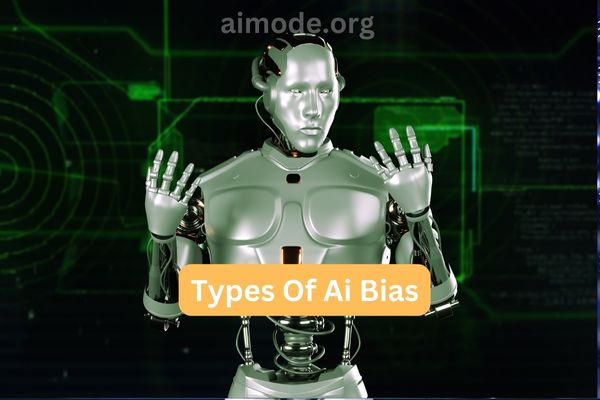Types of AI Bias: Just as AI systems are products of human imagination, they are prone to human-made biases that undermine fairness in decision-making creation. AI biases can originate from different areas such as the data, as information is structured by human biased decisions or the idea is flawed in one of the designed modules.

Also See: Different Types of AI Models In Detail
Understanding what kinds and sources of bias can be found in the AI space, such as sample selection bias, algorithmic bias, and confirmation bias, is going to assist in overcoming these biases and guaranteeing fairness and equal use of AI.
12 Types of AI Bias Explained in Detail
-
Dataset Bias:
Bias resulting from the data used to train AI models. This can include under-representation or over-representation of certain groups, historical prejudices, or data that doesn’t reflect real-world diversity.
-
Sampling Bias:
Occurs when the sample used to train the AI doesn’t adequately represent the larger population. This can lead to skewed outcomes when the AI is used on broader datasets.
-
Measurement Bias:
Arises when the data collected doesn’t accurately measure what it’s supposed to measure, leading to distorted outcomes. This can occur due to flawed data collection methods or incorrect data interpretation.
-
Confirmation Bias:
Happens when the AI’s design, training, or deployment reinforces existing beliefs or patterns, rather than challenging them. This can occur if the AI developers or data collectors have preconceived notions that shape the AI’s output.
Also See: Future of AI in Education: Changing the Whole World
-
Algorithmic Bias:
Bias embedded in the AI algorithm’s design or functionality. It can arise from assumptions made during model creation or the choice of algorithms that inherently favor certain outcomes.
-
Historical Bias:
Occurs when AI models learn from data with historical prejudices or discriminatory practices, causing them to replicate or exacerbate these biases in their outputs.
-
Selection Bias:
Arises when the data used to train or test AI systems is not representative of the entire population or use case, leading to biased predictions or decisions.
-
Aggregation Bias:
Happens when data from different groups is combined in a way that obscures important differences, leading to a one-size-fits-all outcome that can disproportionately impact certain groups.
Also See: 6 Disadvantages of Artificial Intelligence in Business
-
Temporal Bias:
Occurs when data used for training is outdated or doesn’t account for changing trends, causing AI models to be biased towards past patterns that no longer apply.
-
Cultural Bias:
Bias resulting from cultural assumptions or perspectives that influence AI training or output, leading to misinterpretation or stereotyping of certain cultural groups.
-
Recall Bias:
Bias that emerges when certain data points are more likely to be remembered or recalled, affecting the training and output of AI systems.
Also See: 8 Disadvantages of AI in Cybersecurity No Where Discussed
-
Survivorship Bias:
Occurs when data used for training or evaluation only includes “survivors” or successful outcomes, ignoring those that did not succeed, leading to skewed perspectives.
So thats all for today’s types of bias in Ai blogs, we hope that you found it informative. So if you liked it then please share it with your friends.